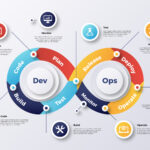In the dynamic landscape of web development, architects and developers are constantly seeking frameworks that offer both flexibility and robustness. One such framework that has stood the test of time is the Zend Framework. Renowned for its modularity, extensibility, and enterprise-grade features, understanding the architecture of the Zend Framework is essential for building scalable and maintainable web applications.
Introduction to Zend Framework Architecture
The Zend Framework is an open-source, object-oriented web application framework implemented in PHP. It follows the MVC (Model-View-Controller) architectural pattern, separating an application into three interconnected components to improve flexibility and scalability. However, the architecture of Zend Framework extends beyond MVC, offering a range of components and libraries that cater to diverse application requirements including GenAI.
Key Components of Zend Framework Architecture
- MVC Architecture: At the core of Zend Framework lies the MVC architecture, which divides the application into three layers:
- Model: Responsible for data handling and business logic.
- View: Represents the presentation layer, responsible for rendering data to the user.
- Controller: Acts as an intermediary between the model and view, handling user requests and updating the model accordingly.
- Component Library: The Zend Framework boasts a rich collection of components and libraries that facilitate common web development tasks. These include components for form validation, authentication, caching, and more, allowing developers to build feature-rich applications with minimal effort.
- Modularity: One of the defining features of the Zend Framework is its modular architecture. Developers can cherry-pick components based on their project requirements, promoting code reusability and maintainability. Additionally, Zend Framework adheres to PSR standards, ensuring interoperability with other PHP frameworks and libraries.
- Middleware: Zend Framework embraces middleware architecture, allowing developers to chain together independent, reusable components to handle HTTP requests and responses. Middleware components can perform tasks such as routing, authentication, logging, and error handling, offering a flexible and customizable approach to request processing.
Benefits of Zend Framework Architecture
- Scalability: By adopting a modular architecture, Zend Framework enables developers to scale applications effortlessly. New features can be added or existing ones modified without affecting the entire codebase, making it ideal for large-scale enterprise applications.
- Security: Security is paramount in web development, and Zend Framework provides several built-in features to mitigate common security threats. From input validation and output escaping to secure session management and encryption, Zend Framework empowers developers to build secure applications from the ground up.
- Community Support: With a vibrant community of developers and contributors, Zend Framework enjoys extensive community support. Developers can leverage forums, documentation, and tutorials to troubleshoot issues, share best practices, and stay updated with the latest developments in the framework.
- Performance: Zend Framework is designed for performance, with optimized code and caching mechanisms that ensure swift response times even under heavy loads. Additionally, the framework offers support for various caching backends, including APC, Memcached, and Redis, further enhancing performance scalability.
Real-world examples of Zend Framework products:
While specific details about internal architectures might be guarded information, below are confirmed real-world examples of products built on Zend Framework:
- Magento (e-commerce): This dominant open-source e-commerce platform used Zend Framework extensively in its core architecture. Magento’s success in handling complex online stores showcases Zend Framework’s capabilities for large-scale applications with a serverless architecture.
- Pimcore (CMS): This powerful CMS, known for its flexibility and data management, is built on Zend Framework. Pimcore’s robust content management features demonstrate Zend Framework’s ability to handle content-driven applications effectively.
- BBC Website (past): Though BBC might have migrated its website since, there are documented instances of them using Zend Framework in the past for their web presence. This highlights the framework’s ability to power high-traffic websites.
- Other potential examples: While official confirmation might be limited, companies like BNP Paribas (financial services) and Autotrack (automotive) have been mentioned in connection with Zend Framework usage.
Remember, with the rise of newer frameworks, some products might have transitioned away from Zend Framework. However, these confirmed examples showcase the framework’s past impact on various types of web applications.Also for more help kind details click on this link
Conclusion
The Zend Framework architecture offers a comprehensive yet flexible foundation for building robust web applications. By embracing modularity, extensibility, and best practices, developers can leverage the full potential of Zend Framework to create scalable, secure, and high-performance applications tailored to their unique requirements. Whether you’re a seasoned developer or a newcomer to web development, understanding the Zend Framework architecture is key to unlocking its full potential and building cutting-edge web solutions.
FAQs: Zend Framework Architecture
1. What is Zend Framework architecture?
Zend Framework architecture refers to the structural design and organization of components within the Zend Framework. It encompasses principles, patterns, and conventions that guide the development of web applications using Zend Framework.
2. How does Zend Framework architecture differ from other frameworks?
Zend Framework architecture distinguishes itself through its modularity, extensibility, and adherence to industry best practices. It follows the MVC (Model-View-Controller) architectural pattern but extends beyond it, offering a rich collection of components and libraries for diverse application requirements.
3. What are the key components of Zend Framework architecture?
Key components of Zend Framework architecture include:
- MVC (Model-View-Controller) architecture
- Component library for common web development tasks
- Middleware architecture for request processing
- Modular design promoting code reusability and maintainability
4. How does Zend Framework architecture promote modularity?
Zend Framework promotes modularity by offering a collection of loosely coupled components and libraries. Developers can select and integrate only the components they need for their project, reducing dependencies and enhancing code organization and maintainability.
5. What is the role of MVC architecture in Zend Framework?
In Zend Framework, MVC architecture divides an application into three interconnected components:
- Model: Handles data logic and interacts with the database.
- View: Represents the presentation layer, responsible for rendering data to the user.
- Controller: Processes user requests, interacts with the model, and updates the view accordingly.
6. How does Zend Framework architecture ensure scalability?
Zend Framework architecture ensures scalability through its modular design and performance optimizations. Developers can scale applications by adding or modifying components without impacting the entire codebase. Additionally, caching mechanisms and support for caching backends enhance application performance under heavy loads.
7. Is Zend Framework architecture suitable for enterprise applications?
Yes, Zend Framework architecture is well-suited for enterprise applications due to its scalability, security features, and adherence to industry standards. Its modular architecture allows for the development of complex applications, while built-in security features mitigate common vulnerabilities.
8. Where can developers find resources to learn about Zend Framework architecture?
Developers can access resources such as documentation, tutorials, forums, and community events to learn about Zend Framework architecture. Additionally, staying connected with the Zend Framework community enables developers to share knowledge, troubleshoot issues, and stay updated with the latest developments and best practices.







